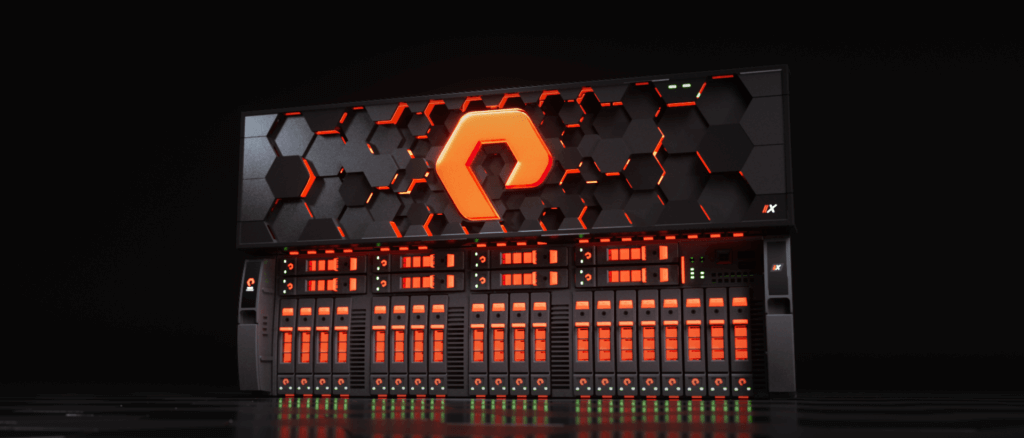
The push by established datacenter tech vendors to get into the as-a-service game has accelerated in recent months, fueled in part by the COVID-19 pandemic and the need by organizations to more quickly embrace cloud services to help them adapt to the suddenly shifted business model that features a more widely distributed workforce, which brings a truckload of security and management issues.
There also has been the ongoing migration into the cloud by organizations even before the public health crisis hit and growing understanding that for most businesses, the future will be rich with hybrid clouds, with a share of on-premises and private clouds as well as multiple public clouds, all of which will demand simpler and streamlined management.
The as-a-service drive is a way for these vendors to have a foot in both the traditional core datacenters and in cloud environments, similar to how the big public cloud providers like Amazon Web Services with its Outposts hardware, Microsoft Azure and Azure Arc and Google Cloud with Anthos, which respectively (which enable enterprises to run cloud services on premises), and Oracle Cloud (with the promise of enabling organizations to place an entire Oracle Cloud set up in their datacenters) are pushing their way into the on-premises world.
Hewlett Packard Enterprise last year made a splash with its promise to offer its entire portfolio as a service by 2022, but VMware has been extending its reach from the datacenter into the cloud for several years and Dell Technologies and Cisco Systems more recently laid out plans to make more of their products available as a service. All hold the promise of enabling businesses to create cloud-like environments in their datacenters, complete with agile hardware and software infrastructures and flexible payment methods, from consumption-based subscriptions to pay-as-you-go.
Pure Storage, the 11-year-old company that made its name as an all-flash storage provider and its expanding Purity operating system (version 6.0 was launched in June), has been on the path toward a data- and cloud-centric world, where an as-a-service portfolio fits nicely. The vendor has looked to chip away at the larger disk storage in market by making its flash storage appliances and software easier to use, less expensive for enterprises and increasingly available in a cloud-like fashion. In 2017, it began offering a flexible consumption model for block storage and a year later unveiled its Evergreen Storage Service (ES2), with its technology available via subscriptions. File and object storage services were added, followed by Cloud Block Store for public cloud and last year ES2 was renamed Pure as-a-Service, a storage-as-a-service offering that offers cloud operations and cloud economics.
“From Inception, we set the North Star as a true cloud service that would be available from a hyperscaler rather than putting a lot of finance and product guys in a room to figure out how we deliver products on subscription,” JP Petty, director of product and solution marketing for the Pure As-A-Service business, tells The Next Platform. “Every incremental change that we’ve made has gotten us a lot closer to being able to revive the self-service that customers expect from hyperscalers — the ability to manage their own environment discounts and subscription, and still get that cloud operational model to improve efficiency of IT organizations and improve staffing by giving them time back and saving them capital that they can then reinvest into either training or more strategic activities like digital transformation and artificial intelligence.”
Pure in August, in announcing fiscal second-quarter financial numbers, noted that while overall revenue was up 2 percent year over year – to $403.7 million – subscription services revenue rose 37 percent, to $131.4 million. In a conference call, CEO Charlie Giancarlo said that the majority of the company’s subscription service comes from on-premises implementations, given the relative newness of the cloud.
“The way that subscription operates as you build revenue, it takes time to build revenue in it, but we are very pleased with the adoption of the cloud portion of the revenue,” Giancarlo said at the time. “Pure as-a-Service, which includes both the ratable service-oriented sale of storage on-prem, which is combined with a subscription to Cloud Block Store, has really unleashed a lot of opportunity for us and has really driven a lot of sales and … a lot of new customer sales, so we are very pleased with that. But there are lot of customers that certainly are planning for cloud that haven’t yet made the jump, but want to make sure that the purchases that they make are both ratable [in the subscription] but also transparent and allows them to move to the cloud at any time.”
Pure as-a-Service offers the company’s range of storage options – block, file, and object – as a service on premises or in a colocation center. Block storage also is available as a service in AWS and Azure and Pure offers a unified subscription model for hybrid cloud environments.
Pure as-a-Service has been a natural evolution for the company, Petty says. Evergreen helped drive Pure down this path and has been helped by Pure1, the storage management product that enables Pure to perform predictive management and monitoring of an organization’s capacity and performance and proactively address issues before they become problems. “This really teed us up to be able to deliver a true cloud experience and a real hyperscaler-style service, largely because Pure had done some really smart work in advance, even on the traditional capital ownership business,” he says.
Pure this week is rolling out updates to Pure as-a-Service designed to further drive expand customer options and the cloud-like capabilities of the offering. Among the enhancements is Full Stack as-a-Service, a converged infrastructure offering built atop of FlashStack, a jointly developed appliance that includes compute, networking and flash storage. Pure and Cisco first announced FlashStack, which initially combined Pure flash arrays with Cisco blade servers and networking switches as well as VMware virtualization technology.
“The end result for customers is that they get a flexible, Full Stack consumption model and it’s already tried and true so that they can leverage all of the Cisco Validated Designs that already exist on FlashStack,” Petty says. “It makes it very easy for them to figure out that if I’m expanding my worker footprint, I can do a FlashStack configuration that supports 2,000 Verizon users, or if I’m doing SQL re-platforming, there’s a consistent configuration for SQL or for Oracle Rack. It adds the simplicity that you would expect from FlashStack, but also layers in the flexibility, because you can then expand those compute, network and storage solutions independently as workloads change and migrate over time.”
The company also is offering a catalog for Pure-as-a-Service that rather than offering block, file or object storage at a single rate, shows four different service tiers for block and two different tiers for unified fast file and object and enabling organizations to buy the storage tier needed for their application. The goal is to give organizations the kind of transparency they find with the cloud and aligning unit costs with workloads. It gives them a better idea of what they’ll be spending in the coming years, Petty says.
The new Block Service Tiers enables companies to save money by lowering the barrier to entry and make scaling over time easier. They can use block capacity with a minimum of 200 TB, down from 300 TB. In addition, Pure has added the Block Ultra Service Tier for in-memory databases, a Block Premium Tier for specialized workloads like containers and test and developer applications and a Block Performance tier for hybrid and multicloud environments.

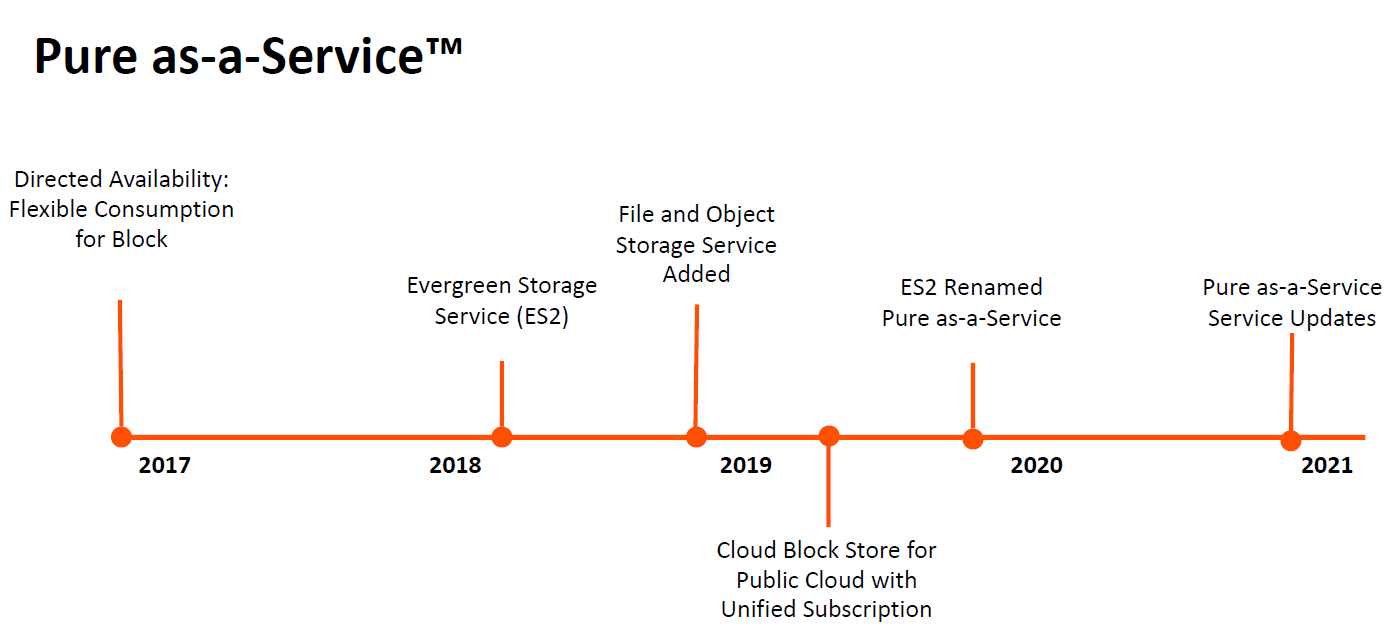
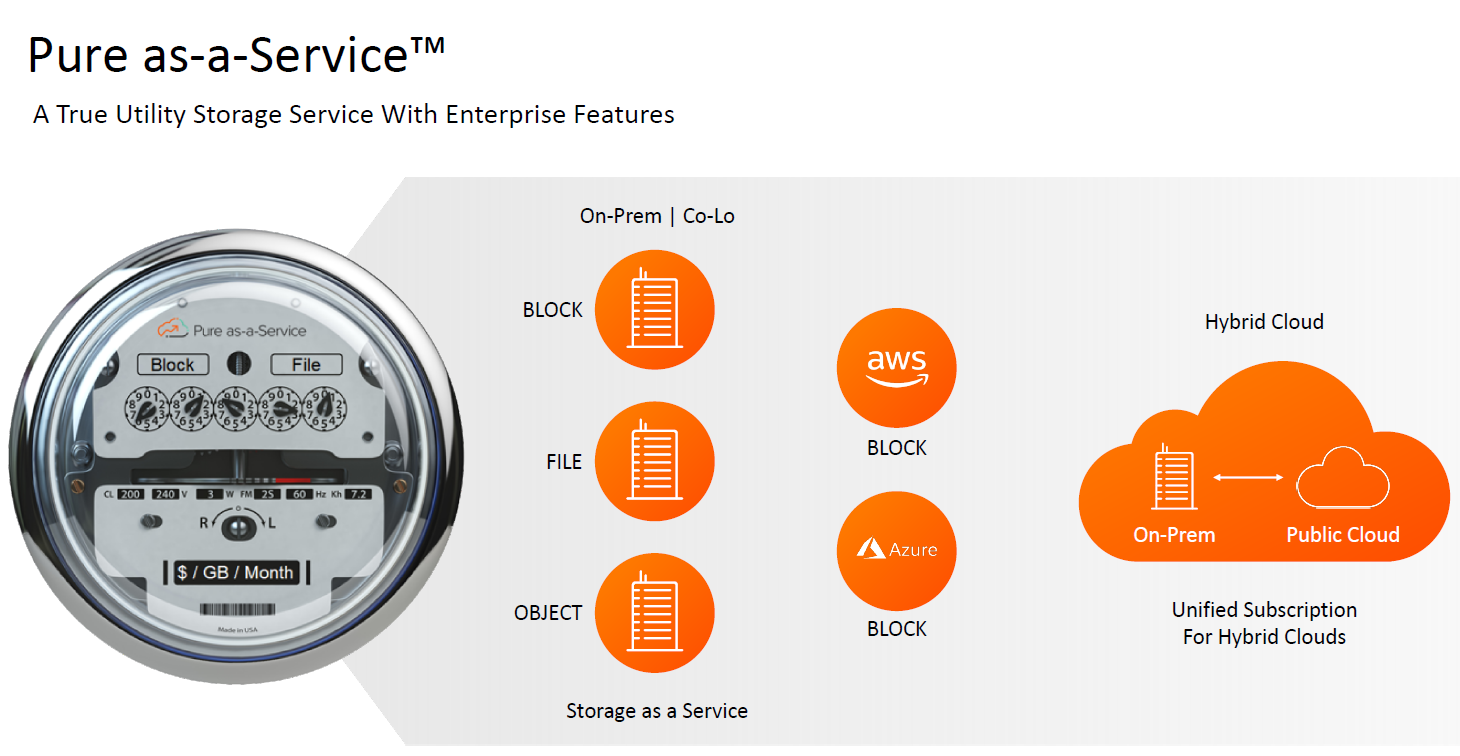
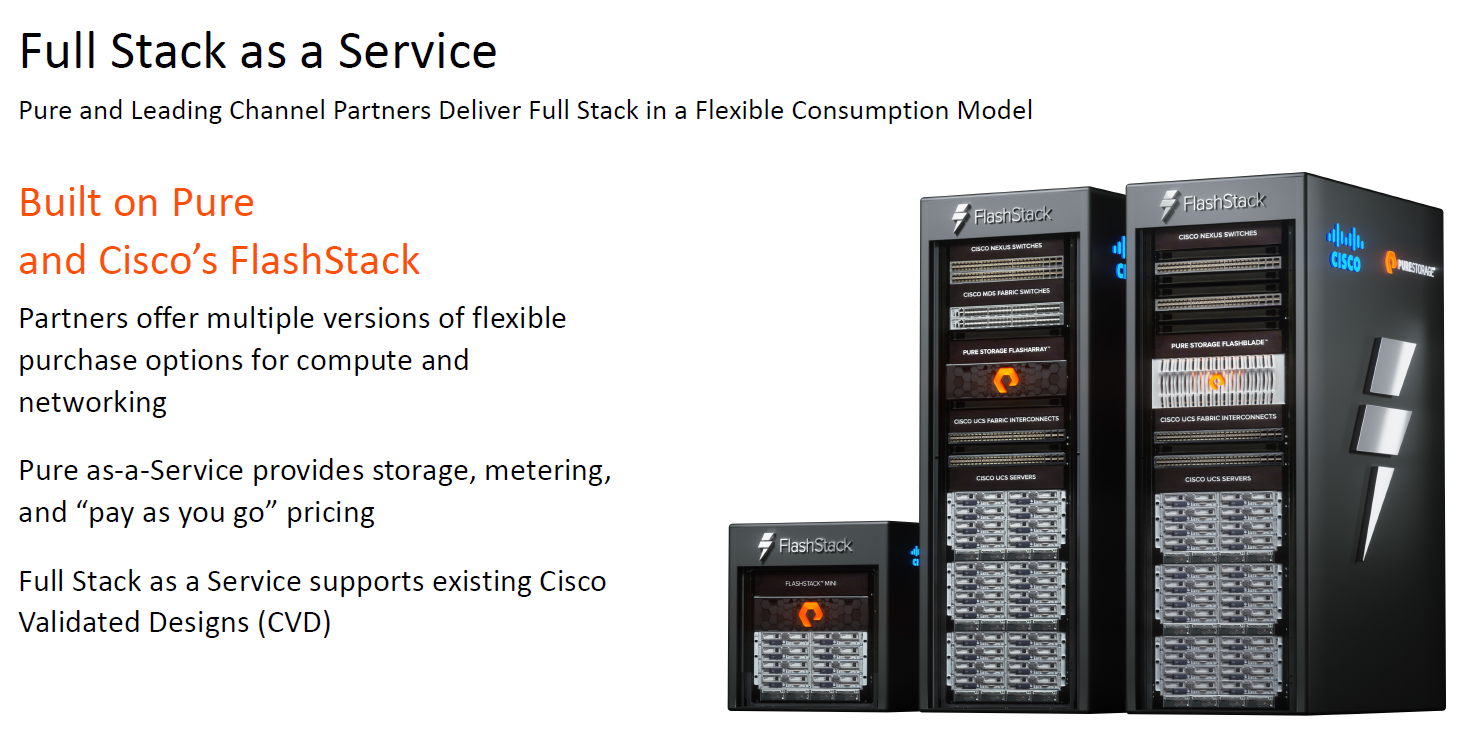
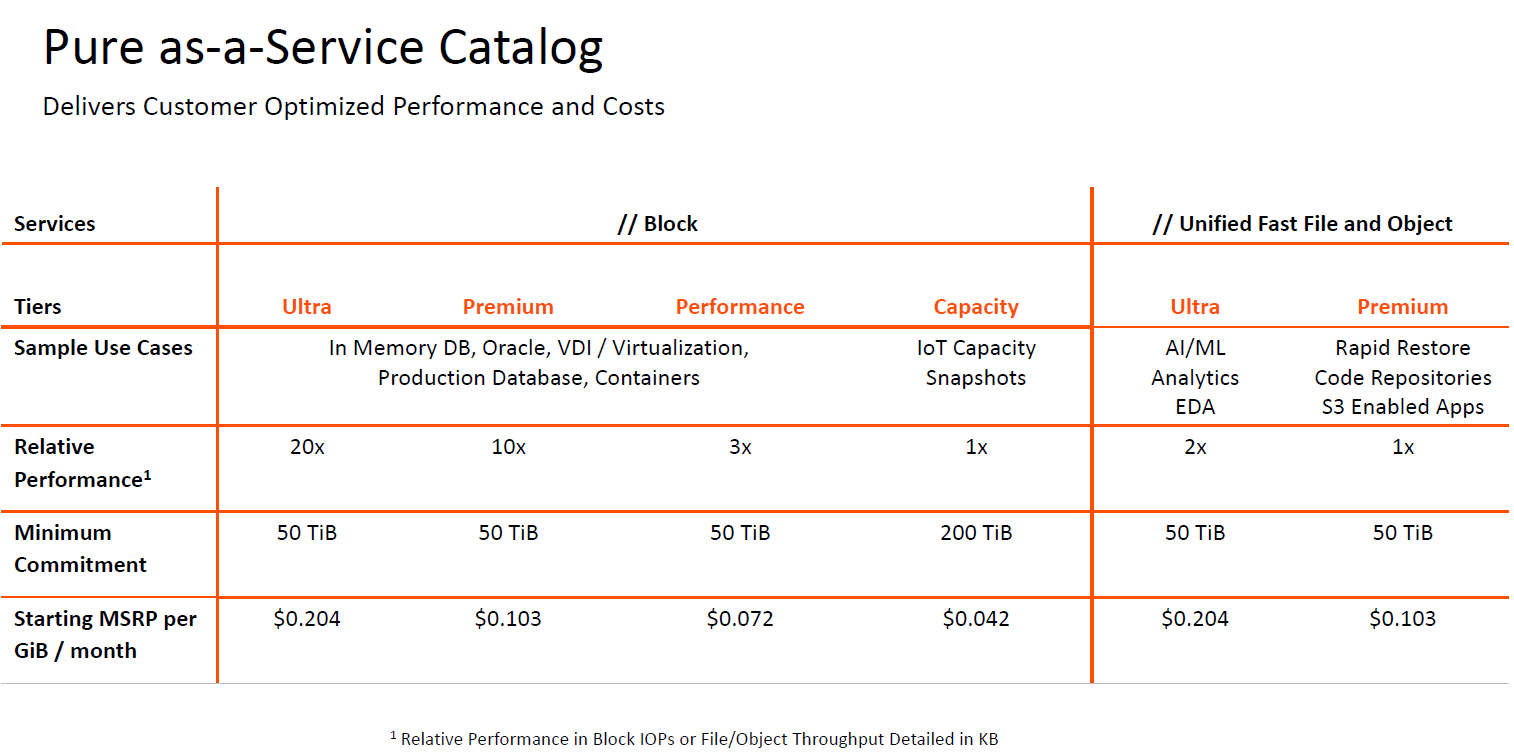




Be the first to comment